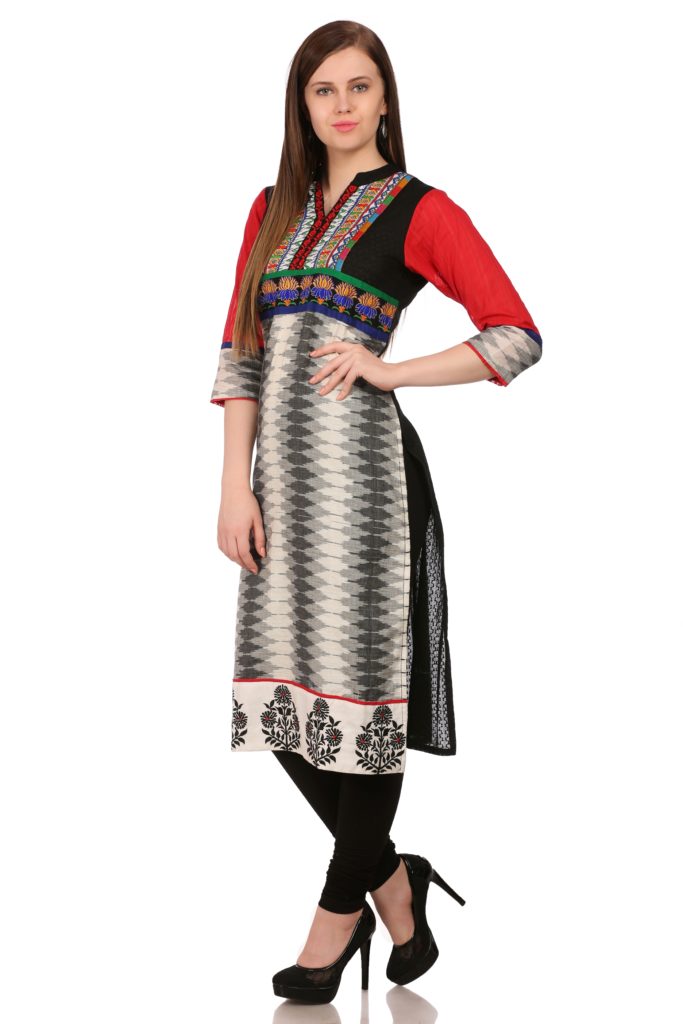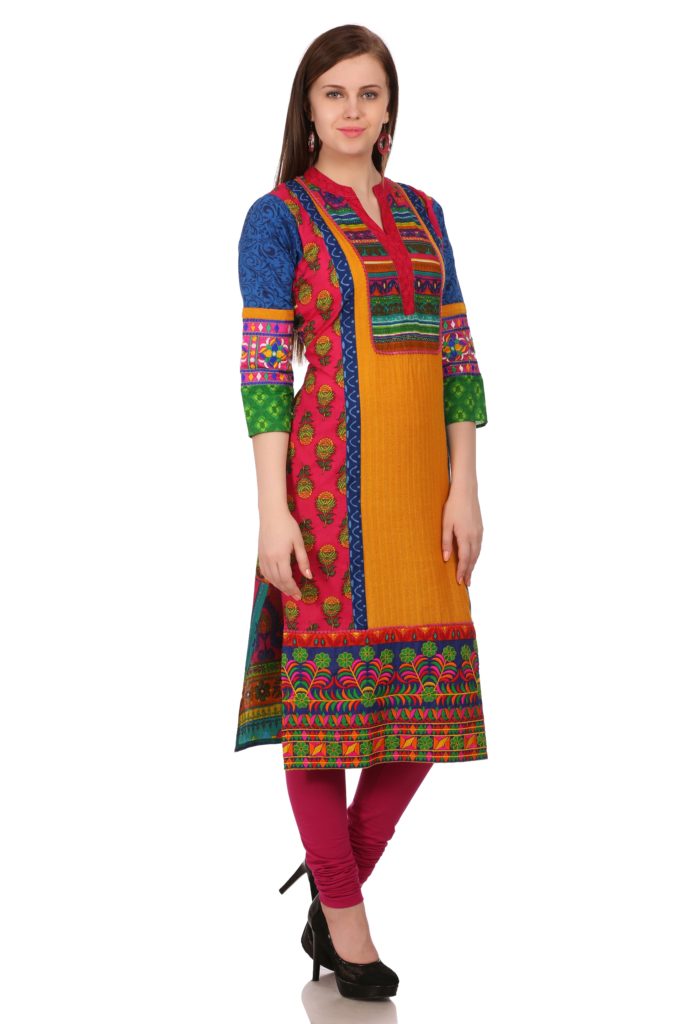India’s textiles sector is the oldest industries in Indian economy, dating back to several centuries. Currently, textiles sector is one of the largest contributors to India’s exports with approximately 11 per cent of total exports. The industry is also labour intensive and is one of the largest employers. India’s overall textile exports during FY 2016-17 stood at US$ 40 billion.
Export Angle
According to a report titled “Indian Textile Industry: Trend and Future” direction by http://industrialgreenchem.com, the projected ‘Vision 2024-25’ has a positive sign for the apparel export industry. The report says, “The Indian textile industry has strength across the entire value chain. Taking innovative measures in partnership with the industry and learning from experience, India could aspire to achieve 20% growth in exports over the next decade. In any case the achievement of 15% growth rate in exports should be feasible. In the domestic market, sustaining an annual growth rate of 12% should also not be difficult. This implies that with a 12% CAGR in domestic sales the industry should reach a production level of US$ 350 billion by 2024-25 from the current level of about US$100 billion for the domestic market. “The apparel sector comprises the production of garments and certain other sewn end-use products like accessories. “As compared to the textile sector, it is more labour intensive, fragmented, and easily entered. This can act as both a positive and negative aspect- with new competition, arising on a daily basis. This competition amongst each other leads to loss of economy in general. Hence, South Korea has outpaced India in terms of economic growth despite having many characteristics in common, such as direct government involvement in industrial development and the financial sector,” says Pankaj Anand, Director and Co-Founder, Sabhyata.
Market Outlook
The future for the Indian textile industry looks promising, triggered by both strong in-house consumption as well as export demand. “With disposable income on the rise, the export sector has experienced a rapid growth in the past decade with the “Make in India” being a torchbearer for Indian apparel. The organised apparel segment is expected to grow at a Compound Annual Growth Rate (CAGR) of more than 13 per cent over a 10-year period,” says Anand. The textiles industry has made a major contribution to the national economy in terms of net foreign exchange earnings and contribution to the GDP and is the second largest provider of employment after agriculture. It is estimated that textiles exports from India will touch US$ 185 billion by the year 2024-25. Availability of low cost and skilled manpower as well as large varieties of cotton fibre has given India a competitive advantage. India is one of the largest exporters of yarn in the international market. The industry has large and diversified segments that provide a wide variety of products. An opportunity in the form of emerging retail industry and malls and elimination of quota restriction leads to greater market share. This apart, the shifting towards branded readymade garments and slowdown in the Chinese economy has offered an opportunity for Indian textiles sector to increase market share in exports.
Trend Check
The most noteworthy change in the Indian textiles industry has been the advent of man-made fibres (MMF). India has successfully targeted its innovative range of MMF textiles in almost all the countries across the globe. MMF production recorded an increase of 10 per cent and filament yarn production grew by 6 per cent in the month of February 2016. MMF production has increased by 4 per cent during the period April 2015-February 2016. Cotton yarn production has increased by about 10 per cent during February 2014 and by about 10 per cent during April 2015–February 2016. Blended and 100 per cent non-cotton yarn production increased by 6 per cent during February 2014 and by 8 per cent during the period April 2015–February 2016.
Number Crunching
As per an ICRA Reseach Services report titled Apparel And Fabric Industry, August 2016, “: Though the global apparel trade has been going through a weak phase, India was nonetheless able to achieve a ~1% growth (in US$ terms) in FY2016 as against a 5% decline in global apparel trade. This muted growth needs to be looked at in conjunction with lower fibre prices in FY2016, adjusted for which the growth in India’s apparel export quantity is estimated at ~3%-4%. While this growth is modest compared to healthy growth clocked in the recent years, the growth quantum looks satisfactory in the backdrop of 5% decline in import quantity of Europe and 6% increase in import quantity of the US, though weak when compared with Bangladesh and Vietnam. Also, India overtook Germany in CY2015 to become the fifth largest apparel exporter after China, Bangladesh, Italy, and Vietnam. However, India remains a marginal player with share of ~4% in global apparel trade. While China is a distant leader in apparel trade, Bangladesh and Vietnam continue to outpace India.” As per ICRA reports, apart from the apparel segment, volume growth in textile exports is also expected in other segments like textile made-ups and home furnishings. The average prices for fibre are also likely to stay higher in FY2017 as compared to the previous year, which will support the growth in value of textile exports.
Government Initiatives
The Government of India has started promotion of its ‘India Handloom’ initiative on various forms of social media to promote high quality handloom products and market the India Handloom Brand. Also the National Textiles Policy aims at creating 35 million new jobs by way of increased investments by foreign companies (expected to be 180-200 billion US$) The Ministry of Textiles has launched Technology Mission on Technical Textiles (TMTT) to promote technical textiles by helping to develop world class testing facilities at eight Centres of Excellence across India. The Ministry has also approved a ‘Scheme for promoting usage of geotechnical textiles in North East Region (NER)’ in order to capitalise on the benefits of geotechnical textiles. The Revised Restructured Technology Up gradation Fund Scheme (RRTUFS) covers manufacturing of major machinery for technical textiles for 5 per cent interest reimbursement and 10 per cent capital subsidy in addition to 5 per cent interest reimbursement also provided to the specified technical textile machinery under RRTUFS. Under the Scheme for Integrated Textile Parks (SITP), the Government of India provides assistance for creation of infrastructure in the parks to the extent of 40 per cent with a limit up to Rs 40 crore (US$ 6 million). Under this scheme the technical textile units can also avail its benefits. Under the Make in India initiative, investment opportunities for foreign companies and entrepreneurs are available across the entire value chain of synthetics, value-added and speciality fabrics, fabric processing set-ups for all kinds of natural and synthetic textiles, technical textiles, garments, and retail brands. Likewise, the Government has undertaken a number of steps to improve Ease of Doing Business in India, to function as single window for obtaining government clearances. The government has also proposed to extend 24/7 customs clearance facility at 13 airports and 14 sea ports resulting in faster clearance of import and export cargo.

Demonetization Effect
The decision of demonetization for Indian currency Rupees 500 and 1000 has significantly affected the textile industry in India like purchase of new yarns and fabric from cash payment in India. Textile industry is majority depends on labour and job work of textile like embroidery job work, fabric printing and other textile labour work. Demonetization will affect cotton and cloth industry because new cotton will not purchase in India for next few days and price of cotton will decrease suddenly for next few days. Central government moves on withdrawal currency of Rupees 500 and 1000 denominations from market it will create some negative impact on cotton yarn market and textile machinery manufacturers. Textile analytical says this effect is for short term period.
This story appeared in the Jan-17 issue of Apparel India Magazine here: INSIGHTS – Apparel Market Sentiments
All images in this post courtesy Sabhyata


